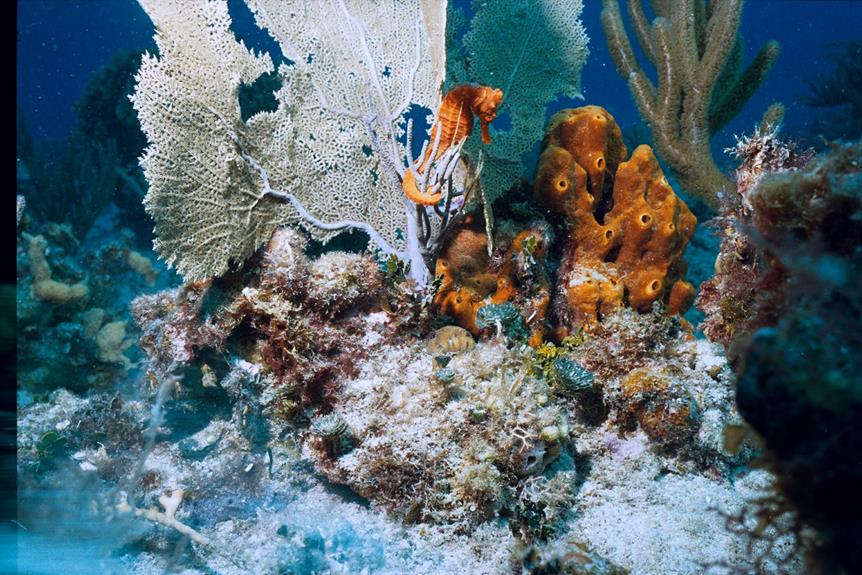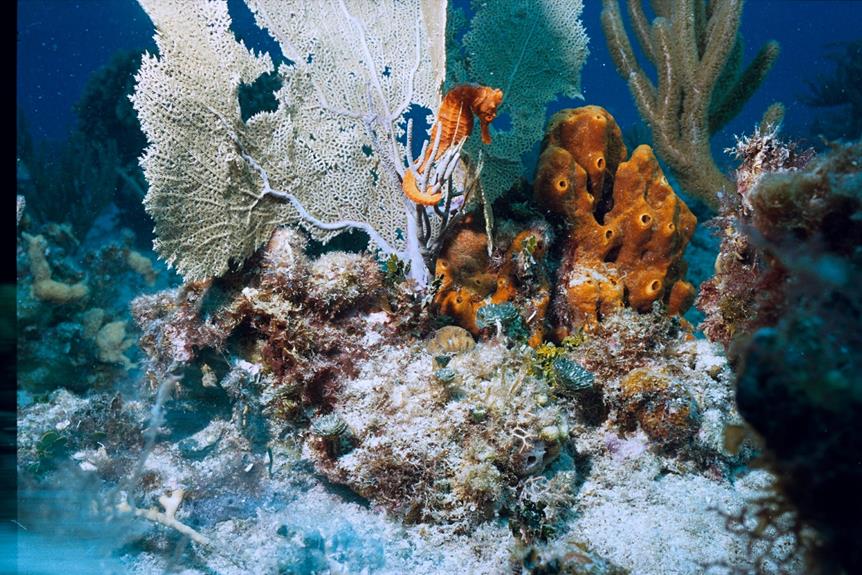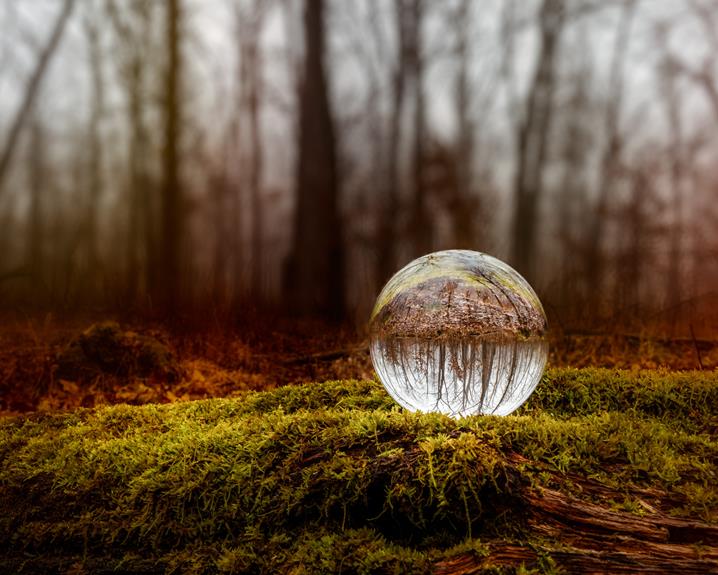Exploring the realm of aquascaping reveals a nuanced world where the selection of aquarium plants plays a vital role in shaping the aquatic ecosystem.
Delving into the realm of slow-growing plant options for aquarists unveils a treasure trove of serene greenery that promises longevity and ease of care.
From the intricate leaves of Anubias to the hardy nature of Cryptocoryne, these botanical marvels offer a glimpse into a tranquil underwater universe waiting to be cultivated.
Discovering the best options among slow-growing aquarium plants opens up a path to creating an aquatic oasis that thrives at a gentle pace, enriching both the aesthetics and sustainability of your tank.
Key Takeaways
- Bolbitis, Java moss, Anubias, and Cryptocoryne are ideal slow-growing plant choices.
- Trimming controls height, select plants wisely, and maintain optimal conditions for slow growth.
- Water wisteria, eelgrass, and hornwort excel in oxygen production for aquarium environments.
- Consider hornwort as the fastest-growing plant option, easy to care for and beneficial for fish fry.
Top Slow-Growing Aquarium Plants
Among the best choices for aquarists seeking slow-growing aquarium plants that require minimal maintenance and care are Bolbitis, Java moss, Anubias, Bucephalandra, and Cryptocoryne. These plants offer various propagation techniques, such as rhizome division for Anubias and Bucephalandra, and runners for Cryptocoryne.
Pruning methods involve trimming dead leaves and controlling height to maintain aesthetics. Tank decoration ideas include placing these plants strategically to create natural-looking aquascapes. Lighting requirements vary for each species, with low to moderate lighting being sufficient for most. Bolbitis thrives in shaded areas, while Java moss can adapt to different light intensities.
Anubias and Bucephalandra prefer low light levels, and Cryptocoryne benefits from moderate lighting for optimal growth.
Tips for Managing Plant Growth
To effectively manage the growth of aquarium plants, it is essential to implement proper trimming techniques and maintain optimal environmental conditions. Pruning techniques play a crucial role in controlling the height and shape of plants. Regularly trimming excess growth helps prevent overcrowding and maintains a balanced ecosystem within the tank.
Additionally, utilizing growth inhibitors can help regulate the speed of plant growth, keeping it in check with other aquatic life. By strategically trimming and using growth inhibitors, aquarists can create a harmonious underwater environment that promotes the well-being of both plants and fish.
Consistency in applying these methods will result in a visually appealing and healthy aquarium landscape where plants thrive without overshadowing other elements.
Oxygen-Producing Aquatic Plants
Aquatic plants play a crucial role in aquarium ecosystems by actively producing oxygen, contributing to the overall health and balance of the underwater environment. These plants not only enhance tank aesthetics but also play a vital role in maintaining optimal oxygen levels for fish health. Below is a table showcasing some top oxygen-producing aquatic plants:
| Aquatic Plant | Oxygen Production | Benefits |
|---|---|---|
| Water Wisteria | High | Aesthetics, Oxygenation |
| Eelgrass | Moderate | Natural Look, Oxygenation |
| Hornwort | High | Oxygenation, Easy to Grow |
| Arrowhead | Moderate | Oxygen Supply, Shelter |
Choosing oxygen-producing aquatic plants can help improve the well-being of your fish and create a healthier aquarium ecosystem.
Fastest-Growing Plant Option
Hornwort stands out as the fastest-growing plant option for aquarium enthusiasts seeking rapid growth and minimal maintenance requirements. This aquatic plant benefits the aquarium by swiftly increasing oxygen levels and providing a natural habitat for fish to explore.
Here are some key points to consider when choosing the fastest-growing plant option:
- Plant Growth Rates: Hornwort can reach full height within weeks, making it an excellent choice for aquarists looking for quick results.
- Aquarium Maintenance: Requires minimal care and maintenance, ideal for beginners or hobbyists with busy schedules.
- Aquatic Plant Benefits: Enhances water quality by absorbing excess nutrients and providing oxygen for fish.
- Fish Behavior: Provides a natural hiding place for fish fry, promoting their safety and well-being in the aquarium environment.
Recommendations for Aquarists
For aquarium enthusiasts looking to enhance their aquatic environment, it is imperative to consider expert recommendations to ensure the optimal care and maintenance of their underwater flora and fauna. When selecting slow-growing aquarium plants, aquarists should focus on plant care techniques and aquascaping ideas that promote a healthy ecosystem.
It is essential to choose plants that are compatible with the fish in the tank and complement the overall tank decorations. By trimming plants occasionally and providing suitable water parameters and lighting, aquarists can manage plant height effectively. Consulting with local sellers for advice on suitable plant options that match the tank's requirements will help ensure that the plants receive adequate care and attention for optimal growth and longevity.
Frequently Asked Questions
How Can I Prevent Algae Growth on Slow-Growing Aquarium Plants?
To prevent algae growth on slow-growing aquarium plants, maintain proper trimming techniques, ensure adequate fertilization, and meet specific lighting requirements. Regularly prune dead leaves, provide balanced nutrients, and adjust lighting intensity to discourage algae development while promoting plant health.
Are There Any Specific Aquarium Fish Species That Can Help Maintain Slow-Growing Plants?
When seeking fish companions to maintain slow-growing aquarium plants, consider algae-eating species like Otocinclus catfish, Siamese algae eaters, and Amano shrimp. These creatures help control algae, enhancing plant growth and maintaining a balanced tank ecosystem.
Can Slow-Growing Plants Be Used in a Low-Tech Aquarium Setup?
Slow-growing plants can thrive in low-tech aquarium setups with adequate lighting and nutrient balance. Managing growth rates and maintenance costs is essential. Understanding lighting requirements and preventing nutrient deficiencies are key to promoting plant health and longevity.
What Are the Potential Drawbacks of Choosing Slow-Growing Plants for an Aquarium?
Choosing slow-growing plants for an aquarium may lead to drawbacks such as higher maintenance requirements due to the need for consistent care, potential nutrient deficiencies, and slower overall growth rates, affecting the tank's aesthetic appeal.
Are There Any Unique Propagation Methods for Slow-Growing Plants to Increase Their Numbers in the Tank?
Propagation of slow-growing aquarium plants can be achieved through methods such as tissue culture, division, leaf cuttings, and runners. These techniques allow aquarists to increase plant numbers effectively and maintain a healthy and balanced aquatic environment.
Conclusion
In the intricate dance of aquatic life, slow-growing aquarium plants act as the steadfast anchors, providing stability and beauty to the underwater world. Through their measured growth and resilience, these botanical wonders symbolize patience and harmony in the aquascape.
By selecting and nurturing these plant species, aquarists can cultivate a tranquil and flourishing aquatic environment that embodies the essence of balance and longevity.





